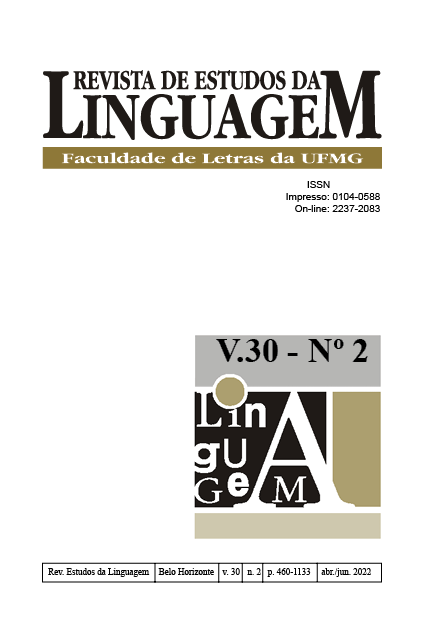Analysis of the connectors “com o objetivo de” and “com o intuito de” from the perspective of Usage-Based Functional Linguistics
DOI:
https://doi.org/10.17851/2237-2083.30.2.1032-1055Keywords:
connectors, purpose, Usage-Based Functional LinguisticsAbstract
Under the theoretical-methodological scope of Usage-Based Functional Linguistics, the present work aims to analyze the main morphosyntactic and semanticpragmatic properties of the connector microconstructions “com o objetivo de” and “com o intuito de”. Data collection was conducted in the written modality corpora of contemporary Brazilian Portuguese, organized by the Núcleo de Pesquisa em Abordagem Construcional da Gramática e Tradução [Research Nucleus on Constructional Approach to Grammar and Translation] (NUPACT), of the Federal University of Juiz de Fora (UFJF). Through a primarily qualitative analysis, the results indicate that, despite not being accounted for in the main traditional grammars, both microconstructions act as connectors that convey the notion of purpose in non-finite clauses. In these clauses, in turn, the position of the connectors implies different discursive-pragmatic values. The microconstructions “com o objetivo de” and “com o intuito de” are formed from the processes of neoanalysis and analogization (TRAUGOTT; TROUSDALE, 2013). Furthermore, the investigated data reveal that both can be considered allostructions, as they can be attested in a framework of constructional variation (cf. PEREK, 2015).




 Esta obra está licenciada com uma Licença
Esta obra está licenciada com uma Licença 